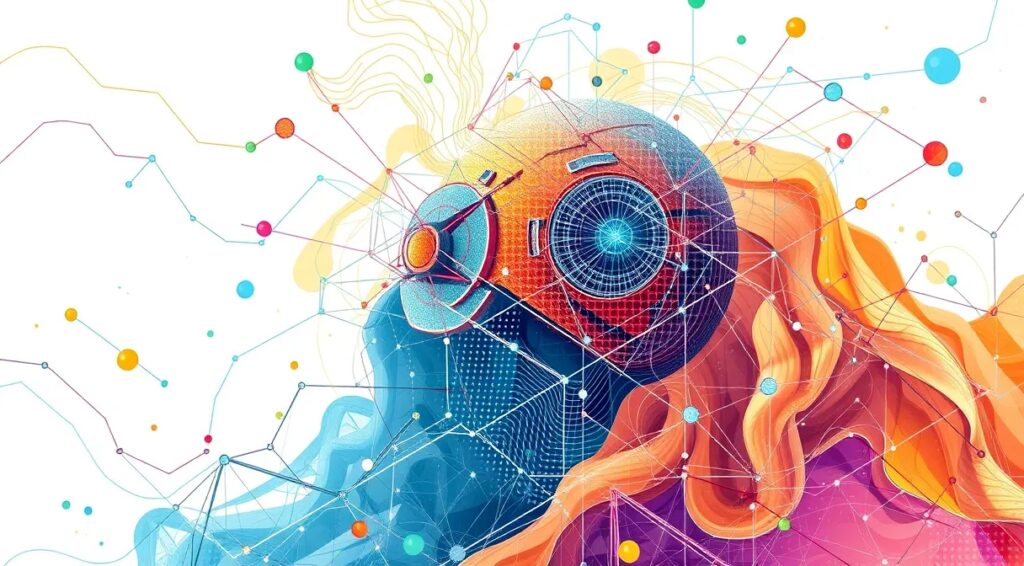
How AI Transforms the Creative Process
Redefining Inspiration in the Digital Age
AI isn’t just a tool; it’s a partner in creativity. Tools like ChatGPT and visual generators are reshaping how we find inspiration.
Artists use AI-generated prompts to spark ideas, making blank canvases less intimidating. Writers, for instance, now collaborate with AI to develop story outlines or unique characters. It’s not about replacing creativity but enhancing it.
For example, platforms like OpenAI’s DALL·E allow creators to generate images based on text. The result? New styles and concepts emerge that might not have been possible without AI’s help.
This collaborative process blends human intuition with AI’s data-driven insights, forming a partnership that’s as exciting as it is unprecedented.
Bridging the Gap Between Ideas and Execution
Creatives often face challenges turning ideas into reality. AI bridges that gap.
Take music composition tools like Amper Music or AIVA. These platforms help musicians draft compositions quickly, offering templates that users can refine into polished works.
For designers, tools like Runway ML allow rapid prototyping of complex visuals without needing advanced technical skills. This doesn’t just save time—it opens up possibilities for those without traditional training.
By simplifying execution, AI ensures brilliant ideas don’t get lost in translation.
AI in Visual Arts: Beyond the Canvas
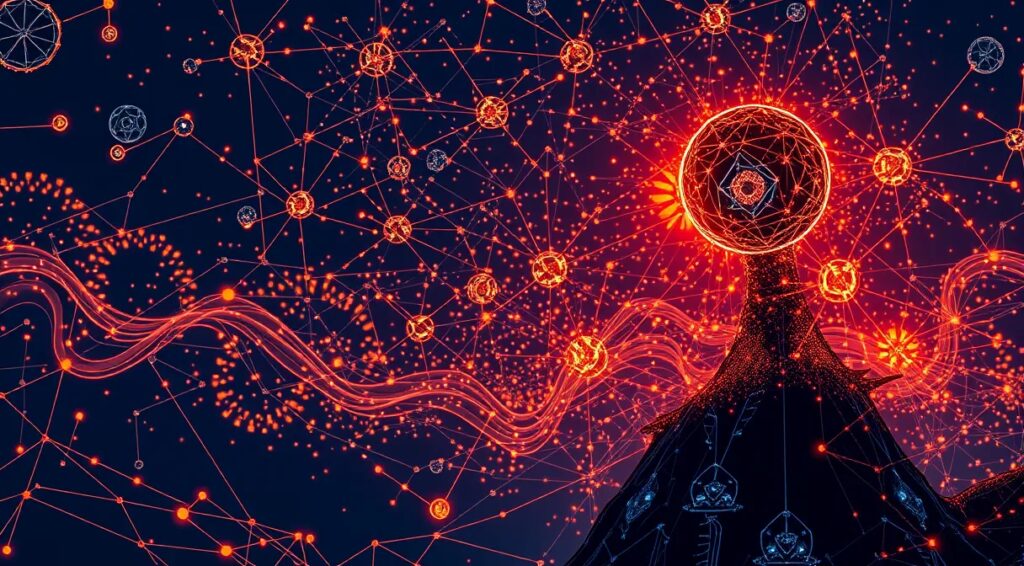
Generating Art Without a Paintbrush
AI art generators aren’t just for fun; they’re reshaping what art can be. Programs like MidJourney and DALL·E create stunning visuals from a simple description.
This democratizes art creation, empowering non-artists to produce professional-grade work. Even seasoned artists use these tools to prototype ideas or discover unexpected techniques.
Critics question whether AI-generated art counts as “real” art. But its impact is undeniable—it challenges traditional norms and pushes creative boundaries.
Personalized Artwork at Scale
Personalization is key in today’s digital world, and AI delivers. Algorithms create custom art pieces tailored to individual preferences, from colors to subject matter.
Brands leverage this for marketing campaigns, using AI to produce unique visuals that resonate with audiences. It’s a game-changer for large-scale projects where uniformity meets uniqueness.
The result? A new era of creative accessibility and tailored experiences.
The Music Industry Meets Machine Learning
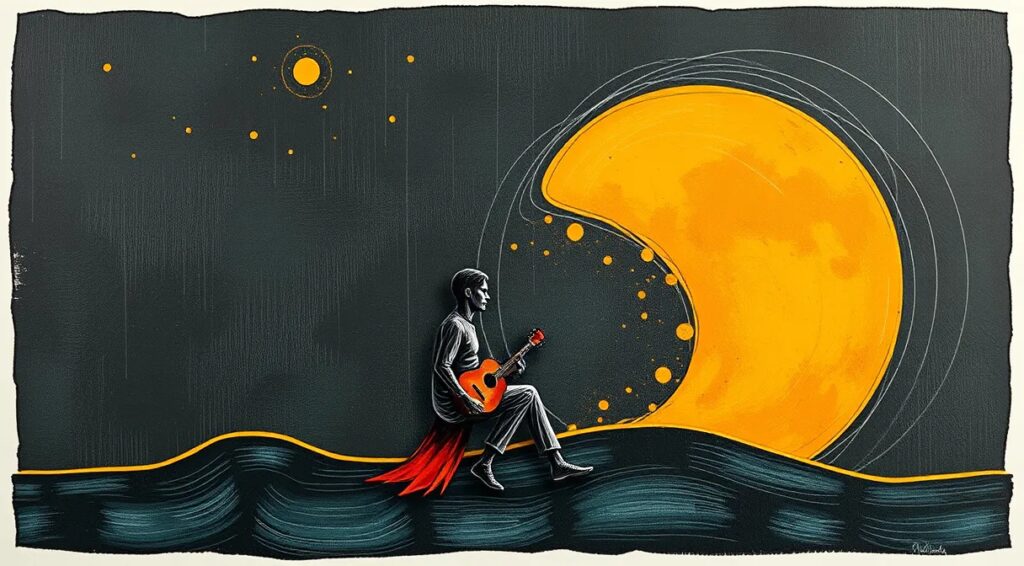
Composing Tracks with AI
AI tools like Google’s Magenta or OpenAI’s MuseNet compose full tracks based on parameters like mood or genre.
This innovation helps musicians explore new styles or finish tricky compositions. Indie artists especially benefit, leveling the playing field with industry giants.
AI-generated music isn’t just filler. It’s finding its place in films, games, and even top-tier albums. Imagine an AI co-writer being credited on a Grammy-winning song.
Reducing Production Costs
Producing high-quality music is expensive, but AI is changing that. With machine learning, artists can create professional sounds at a fraction of the cost.
For instance, mastering services like LANDR offer automated sound optimization. It’s affordable, fast, and high-quality, empowering emerging artists to compete.
AI makes music production more accessible without sacrificing artistry.
Revolutionizing Design: AI’s Role in Crafting Experiences

Smarter UX/UI Development
Designing user experiences often involves guesswork. AI eliminates much of that by analyzing user behavior patterns and creating optimized designs.
Tools like Sketch and Figma now integrate AI-driven plugins that suggest layouts or refine visual elements. This not only speeds up the design process but also improves usability.
The result? Sleek, intuitive interfaces that feel effortless.
Automating Repetitive Tasks
AI doesn’t just handle creative heavy-lifting—it takes care of the mundane, too. Designers can automate resizing, formatting, and even basic animations.
This frees up time for the creative parts of the job, like brainstorming bold ideas or crafting narratives around designs.
With AI as an assistant, designers work smarter, not harder.
Ethics and Challenges: Navigating AI’s Creative Evolution
Copyright and Ownership Questions
One big debate is over who owns AI-generated creations. If a machine creates it, who gets the credit?
Many tools, like OpenAI’s systems, assign ownership to the user. But laws haven’t caught up, leading to gray areas in intellectual property rights.
This sparks critical conversations about the role of human input in defining “ownership.”
Bias in Creativity
AI reflects the data it’s trained on, meaning biases can creep into creative outputs. For example, early AI models often lacked diversity in representation.
Today, creators work to train systems with inclusive datasets. Still, keeping AI free of bias requires constant vigilance.
Navigating these challenges is essential to ensure AI supports innovation without ethical compromise.
AI in Film and Animation: A New Era of Storytelling

Scriptwriting with AI
AI is making its way into the heart of Hollywood. Tools like Sudowrite help screenwriters brainstorm dialogue or refine story arcs, offering new dimensions to storytelling.
AI isn’t replacing writers but acting as a creative collaborator. By analyzing patterns in successful scripts, it suggests twists or dialogue that resonate with audiences.
This speeds up the creative process, giving storytellers more room to focus on crafting compelling narratives.
Visual Effects and Animation
Creating high-quality visual effects (VFX) and animations is traditionally labor-intensive. AI-driven tools like DeepMotion now generate realistic animations based on minimal input, saving time and costs.
In film production, AI enhances visual continuity and smooths out imperfections during editing. It even generates de-aged actors or realistic CGI characters, pushing the boundaries of cinematic realism.
From indie projects to blockbuster films, AI ensures creative visions come to life with fewer hurdles.
AI and Creative Collaboration: Humans and Machines Unite
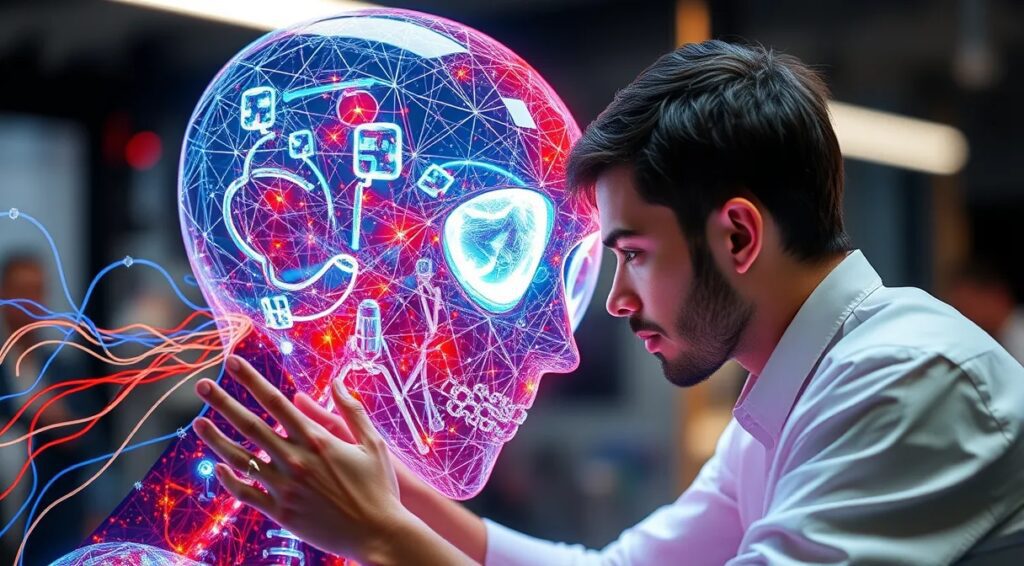
Crowdsourcing Creativity with AI
Collaboration has taken on a whole new meaning. Platforms like Artbreeder combine AI with crowdsourced input, allowing users to co-create stunning visuals.
This collective effort sparks unique outcomes, as multiple minds (and one machine) contribute to the final product.
It’s not just about individuals using AI—it’s about global creativity networks, powered by shared ideas and AI’s computational muscle.
Enhancing Teamwork in Creative Agencies
In agencies, AI acts as a central hub for brainstorming and production. Dynamic tools generate mock-ups, brand campaigns, or ad copy, giving teams a head start.
AI’s ability to synthesize ideas ensures faster turnaround times and more innovative solutions. It’s the ultimate teammate for modern creative professionals.
Accessibility and Democratization of Creativity
Empowering Amateur Creators
Before AI, creating professional-grade content required years of training or expensive tools. Now, AI-driven platforms democratize access to creativity, enabling anyone to participate.
From Canva’s design templates to platforms like Soundraw for music, amateur creators can produce work that rivals seasoned professionals.
This is leveling the playing field, creating a vibrant ecosystem of diverse voices and perspectives.
Supporting Marginalized Voices
AI also empowers underrepresented communities, offering tools to share their stories in innovative ways. For example, indigenous creators use AI to preserve and adapt traditional art forms for modern audiences.
This technology amplifies marginalized voices, fostering a more inclusive creative landscape.
Future Trends in AI and Creativity

Hyper-Personalized Creative Experiences
The future of AI creativity lies in extreme personalization. Imagine art, music, or design that evolves based on your preferences in real-time.
For example, AI-generated music playlists could shift mood and tempo as you exercise, work, or relax, tailored minute-by-minute to your biometric data. In visual art, platforms may soon let you tweak AI-created designs just by describing what you imagine.
Brands are already exploring this with AI-driven marketing that delivers hyper-relevant content. The next leap? Entirely personalized creative ecosystems that adapt uniquely to each user.
Immersive and Interactive AI Creations
AI will play a significant role in creating immersive experiences for virtual and augmented reality (VR/AR). From designing VR game environments to enabling interactive AI-powered NPCs (non-player characters), the potential for storytelling is staggering.
For example, AI could help users craft their own virtual worlds—customized landscapes, architecture, or even weather systems—all in real time. Similarly, music and visuals could adjust dynamically as users explore.
This trend highlights the fusion of AI and experiential creativity, where consumers become active participants in the creative process.
The Rise of AI Curators
In the future, AI may curate entire exhibitions, playlists, or portfolios, acting as both critic and tastemaker. Platforms could analyze trends, historical influences, and user preferences to deliver curated experiences that feel deeply human yet are powered by machine learning.
For instance, AI could curate personalized museum tours, suggesting exhibits based on your interests. It could even create virtual galleries tailored specifically to your tastes.
This extends to entertainment: AI might recommend films or books while also suggesting alternative endings or custom storylines.
Ethical Creativity Frameworks
As AI continues to evolve, so do concerns about ethics and ownership. The future will likely see the emergence of standardized ethical frameworks for AI-driven creativity.
Creators and organizations will demand transparent algorithms that credit contributors fairly, ensure inclusivity, and prevent misuse of sensitive data. For instance, creative commons licenses may evolve to cover collaborative AI works, and bias-checking algorithms will become a standard part of AI training.
These frameworks will ensure responsible innovation, safeguarding creativity’s integrity while embracing AI’s transformative power.
AI and Collective Creativity
The next wave of AI will focus on collaborative platforms where human creators and machines work together globally. Imagine crowdsourced projects where artists from different corners of the world contribute ideas, refined and unified by AI.
This could lead to truly international art, blending styles and influences seamlessly. For example, a song written by users from five continents and orchestrated by AI might capture the essence of global diversity.
Crowdsourcing creativity through AI will expand horizons, building bridges between cultures and styles that were once difficult to merge.
Exploring the Impact of AI-Driven Creative Trends
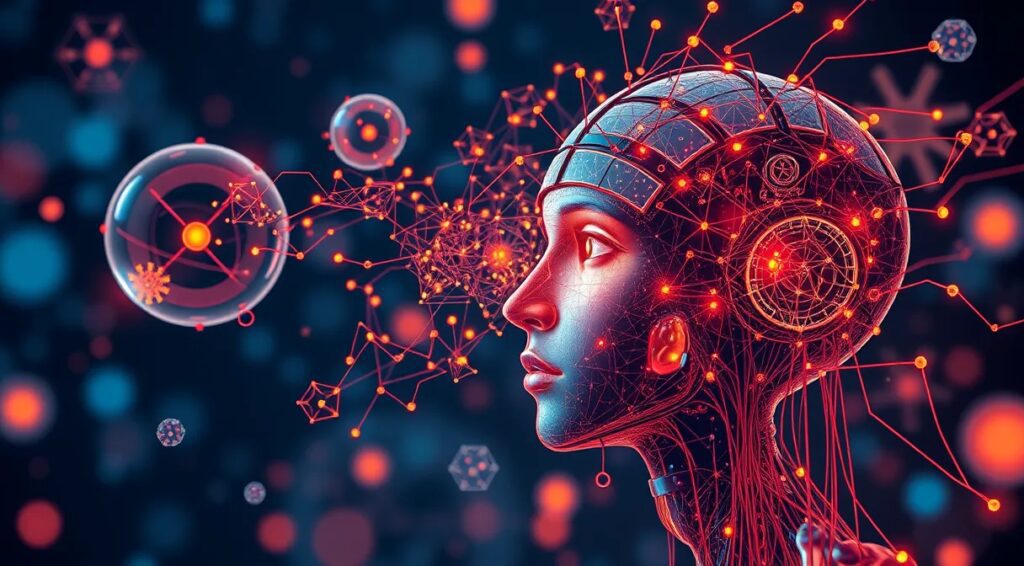
Hyper-Personalized Creative Experiences: Changing Consumption
The shift toward hyper-personalization will profoundly transform how people interact with art and media.
On an individual level, bespoke creative experiences will blur the line between passive consumption and active participation. A song could adapt its tempo as you jog, or a digital artwork might change colors to suit your mood. These dynamic changes not only enhance engagement but create a deep emotional connection between creators (and their tools) and the audience.
For businesses, hyper-personalization opens new revenue streams. Streaming platforms could offer premium, fully personalized playlists or visual experiences. Brands might use AI to craft advertisements tailored to individual preferences, dramatically improving customer loyalty and satisfaction.
However, this trend also raises concerns about privacy and data ownership. Hyper-personalization relies heavily on collecting and analyzing personal information, prompting debates about transparency and consent. If implemented responsibly, the result will be a creative ecosystem that feels profoundly intimate and uniquely human.
Immersive AI Creations: Transforming Virtual Worlds
As AI integrates with AR and VR technologies, entire industries will shift their focus to interactive storytelling. This trend has implications for gaming, education, and even mental health.
Imagine video games where NPCs evolve in response to your decisions—not through scripted behavior but via machine learning. These interactions could create unique, never-before-seen narratives. Similarly, in education, virtual environments could adapt to students’ learning styles, offering tailored lessons that blend fun and understanding.
In mental health, AI-driven VR could craft therapeutic landscapes. For instance, patients suffering from anxiety might explore calming environments customized to their preferences.
While immersive creativity promises endless possibilities, there are risks. Over-reliance on AI could dilute human artistry in storytelling or lead to homogenized virtual experiences if diverse inputs aren’t prioritized. Creators and developers must ensure these tools enrich rather than replace human creativity.
AI Curators: Reshaping Access to Culture
The emergence of AI curators will democratize access to culture, helping people discover art, music, and literature previously out of reach.
For museums, AI could design tailored visitor experiences by combining historical context with modern analysis. A virtual guide might adjust its narrative to align with each visitor’s interests, making learning more engaging. Similarly, in streaming, AI-curated playlists could introduce audiences to niche creators, boosting exposure for emerging talent.
However, giving AI control over curation raises philosophical questions. Whose taste defines the algorithm? Without diverse training data, AI might perpetuate existing biases, limiting exposure to underrepresented voices. Efforts to diversify training datasets and involve human oversight will be crucial to ensure inclusivity and fairness.
Ethical Creativity Frameworks: Ensuring Responsible Innovation
The rise of ethical frameworks for AI in creativity will have a stabilizing effect on the industry, ensuring trust and fairness in AI-generated works.
For creators, these frameworks could guarantee clear ownership rights for collaborative works. If an artist uses AI to design a piece, they should retain the majority of intellectual property, provided their input is significant. This approach would alleviate fears of creators being overshadowed by machines.
For consumers, transparency will be key. People will demand to know when a creation is AI-generated versus human-made. Labels or certifications might emerge to differentiate these works, similar to how organic produce is marked in supermarkets.
While some see ethical standards as stifling innovation, they’re vital for fostering sustainable growth in AI-driven creativity. By addressing concerns early, the industry can avoid public mistrust or backlash as the technology matures.
Collective Creativity: A Global Renaissance
AI’s ability to facilitate cross-border collaboration will usher in a creative renaissance. By connecting artists, musicians, and designers worldwide, these platforms will give rise to works that reflect global diversity.
For instance, an artist in Brazil could collaborate with a musician in Japan and a writer in Canada, with AI acting as a translator and harmonizer. The result could be an artwork that integrates samba rhythms, haiku poetry, and First Nations storytelling in ways never before imagined.
Such collaborations will also create opportunities for marginalized voices to contribute to international projects, breaking barriers of geography, language, and accessibility. However, this trend requires equitable access to AI tools. Without infrastructure in underserved regions, there’s a risk of widening existing divides.
If implemented thoughtfully, AI-facilitated collective creativity could redefine cultural exchange, leading to a world where creativity knows no boundaries.
Actionable Steps for Creators Navigating AI in Creativity
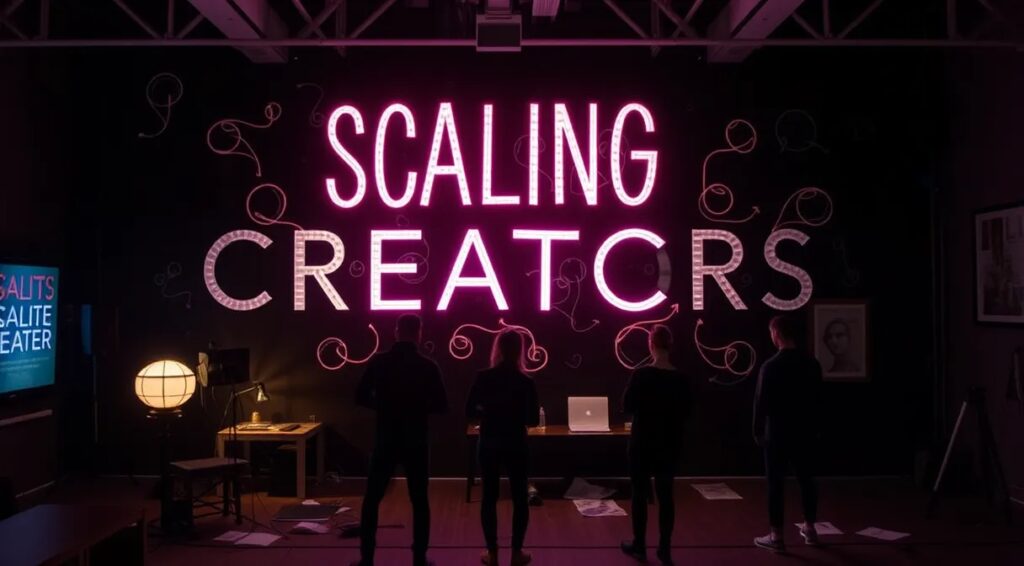
1. Embrace AI as a Partner, Not a Replacement
AI isn’t here to take over—it’s here to assist. Creators should view it as a collaborative tool that enhances their vision.
- Experiment with platforms like DALL·E for generating visual ideas or tools like ChatGPT for brainstorming content.
- Use AI to handle repetitive tasks, like formatting or resizing designs, freeing up time for core creative work.
- Test AI’s limits to understand where it excels and where it needs human guidance.
By building familiarity, creators can integrate AI seamlessly into their workflows without feeling threatened by its presence.
2. Build a Unique Creative Identity
As AI becomes more accessible, standing out will matter even more. Develop a signature style or voice that AI tools can enhance but not replicate.
- Infuse personal experiences, cultural nuances, or emotions into your work—elements that AI struggles to generate authentically.
- Customize AI outputs by tweaking parameters or blending them with your manual edits.
- Explore hybrid creations where AI provides the foundation, and human creativity adds the final flourish.
A strong creative identity ensures your work remains distinct, even in a world filled with AI-generated content.
3. Stay Updated on AI Tools and Trends
The AI landscape is evolving rapidly, and staying informed is essential to remain competitive.
- Follow industry blogs, newsletters, and forums focused on AI and creativity (e.g., AIArtists.org or The Verge’s AI section).
- Participate in workshops or online courses to master advanced tools and techniques.
- Join communities of creators experimenting with AI to exchange ideas and insights.
Regular updates keep you ahead of the curve, ensuring you maximize AI’s potential in your craft.
4. Advocate for Ethical and Inclusive AI Practices
As a creator, your voice matters in shaping how AI evolves. Advocate for fair, transparent, and inclusive AI practices in your industry.
- Push for clear copyright policies that protect human contributions in AI collaborations.
- Support or use platforms committed to ethical AI, ensuring diverse and unbiased training datasets.
- Promote inclusivity by creating works that represent underrepresented voices, using AI as a tool for amplification.
Engaging in these efforts ensures AI tools evolve in ways that empower, rather than exploit, creators.
5. Diversify Revenue Streams with AI
AI opens new avenues for creators to monetize their work. Explore ways to leverage its capabilities for growth:
- Offer AI-assisted services, such as custom artwork or content creation, for clients who value personalization.
- Create tutorials or workshops teaching others how to use AI in their creative fields.
- Use AI to scale production, allowing you to cater to more clients or projects without compromising quality.
These strategies help future-proof your career, turning AI into a profit-enhancing asset.
6. Balance Experimentation with Mastery
While AI offers countless possibilities, don’t get lost chasing every new feature. Balance experimentation with a focus on perfecting your craft.
- Dedicate time to learning the tools you’ll use most, and integrate them deeply into your process.
- Avoid over-relying on AI outputs—your human creativity remains the core of your work.
- Use AI to explore uncharted ideas, but refine and polish them using your personal expertise.
This balance ensures you create work that’s innovative yet grounded in skill and authenticity.
Final Thought
AI is more than just a passing trend; it’s a paradigm shift in how creativity unfolds. By taking these steps, creators can navigate this exciting landscape confidently, ensuring their work remains impactful and future-proof.
Would you like additional advice tailored to a specific creative field, like writing, visual arts, or music?
Resources
AI Tools for Creative Work
- DALL·E 3 (OpenAI): Text-to-image generator ideal for visual artists and designers. Great for prototyping and brainstorming ideas.
Learn More - ChatGPT (OpenAI): Use for writing assistance, story development, brainstorming, or even creating social media content.
Learn More - Runway ML: A versatile tool for video editing, image creation, and even machine learning for creative professionals.
Learn More - AIVA: AI music composition platform for generating tracks based on mood, style, or instruments. Ideal for musicians and content creators.
Learn More - DeepMotion: Motion capture and animation software that uses AI to create realistic character movements for films and games.
Learn More - Learning Platforms and Communities
- AIArtists.org: A hub for exploring the intersection of AI and art. Features case studies, galleries, and resources for aspiring AI creators.
Visit Site - Medium’s AI Creativity Section: Articles and essays on the latest developments in AI-powered creative tools and trends.
Visit Site - Creative AI Slack Group: A collaborative community for artists and developers working at the intersection of AI and creativity. (Sign up required.)
Visit Site - Coursera: Offers online courses like “AI for Everyone” (by Andrew Ng) and specialized courses on using AI tools for design, music, and more.
Visit Site